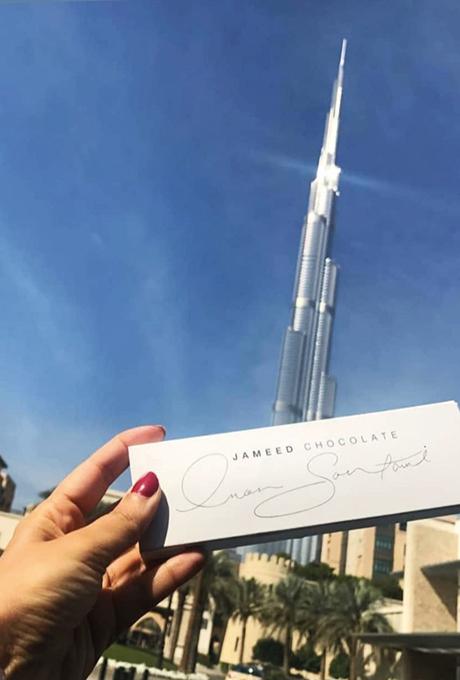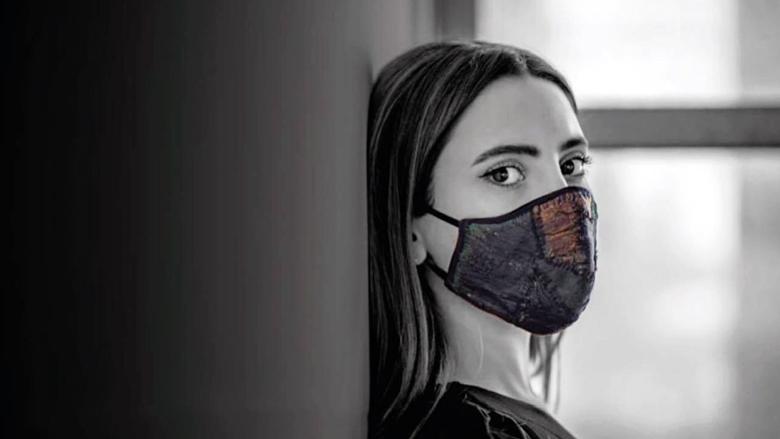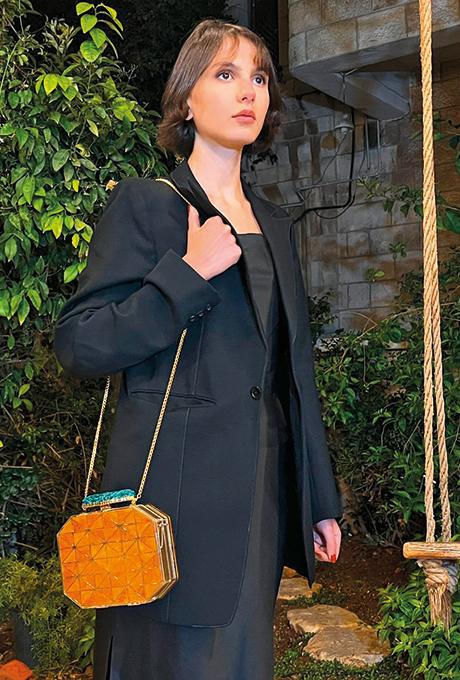Fashion meets food: Omar Sartawi will make you reconsider the waste you throw away
Jordanian avant-garde designer Omar Sartawi is pushing the boundaries of design by marrying sustainability and luxury with nature’s textures, discovers Tessy Koshy
Omar Sartawi loves cooking up a storm, but not just in the kitchen. In his culinary lab, the Jordanian food artist and molecular gastronomist has been deconstructing textures and tastes to create avant-garde sustainable products. Notable and most recent among them is a bejewelled luxury handbag, made from orange peel leather, a first of its kind. Unveiled at the Expo Dubai 2020 last month, the bag designed in collaboration with Bahraini designer Noof Al-Shekar, grabbed quite a few eyeballs.
“Around three years ago, I created a sustainable, biodegradable and animal-cruelty-free leather from whole peels of fruits and vegetables. Since then, I have been perfecting the way I cure the material. I have also been collaborating with fashion designers and furniture makers. So, when a friend introduced me to Noof, I immediately fell in love with her designs. As she was working on a sustainable line, it was a match made in heaven,” Omar tells Friday.

The gold brass bag, studded with semi-precious stones, made with digitally fabricated vegan leather is a powerful hallmark of marrying sustainability and luxury with nature’s textures. But then Omar is well-known for his conceptual interpretations and methodical innovations that stand out from the rest. In 2019, he created a limited edition series of aubergine leather masks in collaboration with Jordanian designers Princess Nejla bint Asem and Salam Dajani. Two years later, he went a step ahead and stitched large batches of aubergine leather to create a 2.4 x 1.2 metre tent installation. A tribute to his Arabian forefathers, the installation resembling sand dunes and titled In a Land of No Sheep: The Metamorphosis of a Nomadic Tent was on display at Fann A Porter Gallery, Dubai in November 2021. Along with the tent he also exhibited The Duck a l’orange, a collectible side table made of orange peel leather.
“The peels of so many fruits and vegetables are just discarded. Imagine if all that food waste was to be turned into leather. It is beyond measure, the great impact it will have on our planet and in saving animal life,” points out Omar. “I believe the world is becoming more humane and we are trying to do our part in driving towards a kinder and smarter future.” Interestingly, the bag was also a true Middle Eastern collaboration, he says. The leather cured by him in Jordan was shipped to Lebanon, where as per the design made by Noof in Bahrain, it was assembled on a brass frame.
To create these living art products, Omar uses a combination of ancient and contemporary techniques. The peels are taken through various deconstructing methods, including cooking, freezing and dehydrating until they become tough. This process takes about two weeks and the material can last for years. “I have been developing vegan leather meshing techniques from different civilizations, for instance, taking on from the ancient Mayans, to the new-age French sous-vide method,” he shares. “I took peels from around 15 oranges to make one bag that sells for thousands of dollars, which really should change your perspective on what you consider waste and throw away.”
Born in Amman, in a family of surgeons and doctors, young Omar was strangely not drawn towards donning a white coat, but was instead fascinated by food and handmade crafts. The local butchery near his grandfather’s house, was his favourite haunt. He would watch the butcher for hours, working with his hands on the meat. Although food was his passion, being a chef was not an accepted career path for his family. So, after completing an engineering degree in the UK, he came back to Jordan to work in the stock market. What followed were a series of odd jobs – from marketing to construction and design, to finally leading up to the launch of his own restaurant in Amman. “I opened the restaurant thinking it would be an easy task to run it, but very soon I was proven wrong. That was 10 years ago, it was also the beginning of my learning curve. I learnt about the food industry, by working with the best chefs and later got professionally trained in food science and physics at Harvard, triggering my journey to express myself through food,” tells Omar.
He first rose to fame with the creation of Jameed chocolate in 2016 when he blended white truffle chocolate with the Jordanian cultural recipe of Jameed, dried Laban made from fermented goat’s milk, an iconic ingredient in Mansaf, their national dish. The product was at first received with mixed reactions with a segment of people questioning Omar for diluting the essence of a traditional dish. Yet, there was a huge demand for the controversial innovative product.
Giving new meaning to food art with Jameed as the main ingredient again, he created yet another fusion recipe by crafting the replica of Ain Ghazal, a set of pre-pottery Neolithic statues, representing the human form unearthed in Amman. This edible Jameed concrete sculpture, exhibited at Amman Design Week in 2019, won him much critical acclaim and media spotlight.
Redefining sustainable living and never shying away from experimenting, most of Omar’s creations are for the greater good of humanity. The orange peel bag too, currently on display at Fann A Porter Gallery, Dubai, will be auctioned to raise money for charity. “I can’t paint, I can’t sculpt. Food is my canvas and my stone,” says Omar. “I use it to represent myself, breaking down taste and time to manipulate your senses by giving you an experience. I am excited about future collaborations with designers and architects to build sustainable products so that we can be more gentle to our planet.”

